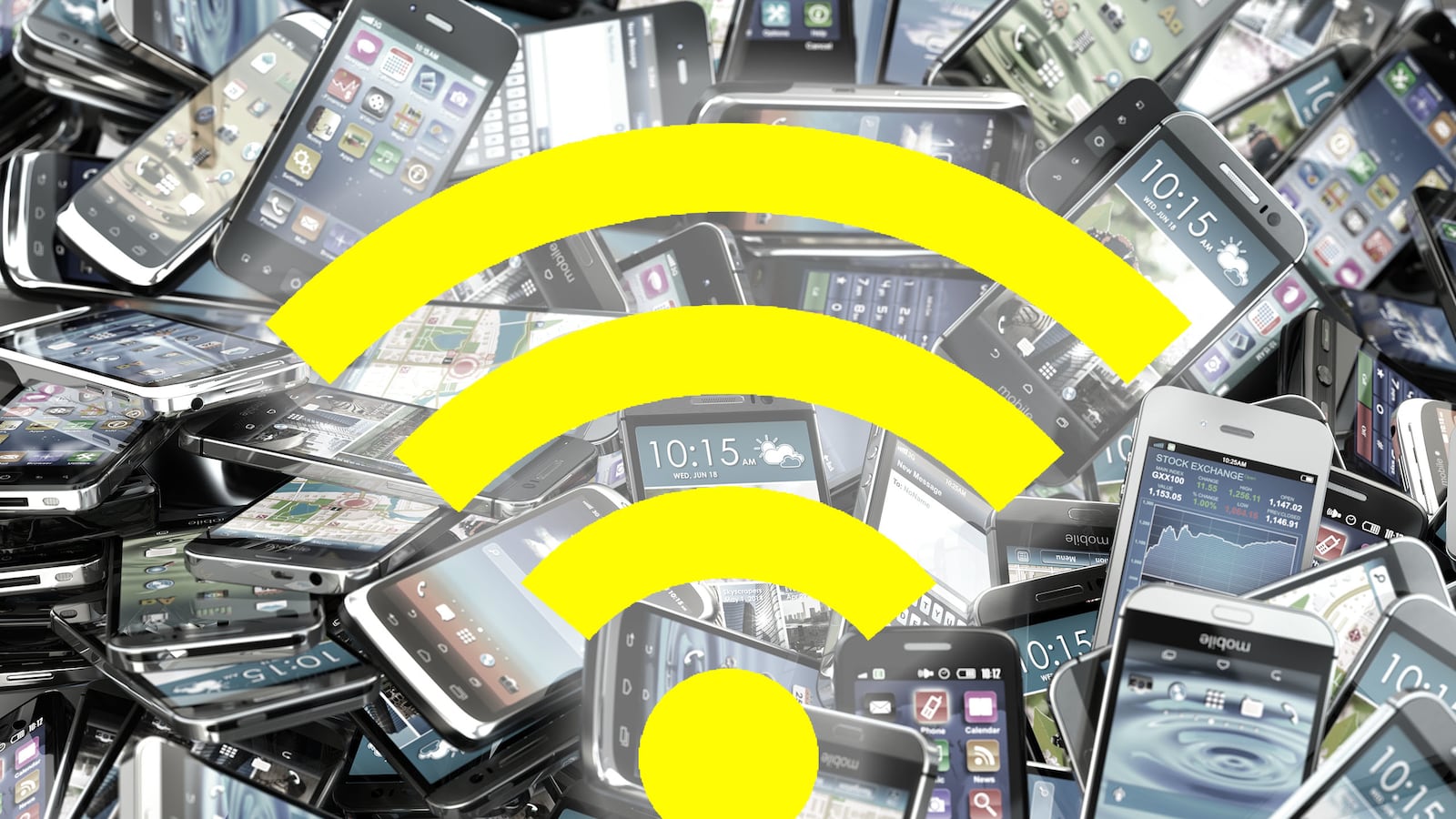The landline and cable service were the first casualties of a coming great purge. Tech service companies are no longer safe unless they deliver better, newer levels of quality and service, all without raising prices. The next industry headed to the chopping block? Cell carriers.
Think about it: home phones, cable television—for decades they relied on a vast and complex infrastructure to keep customers on the hook. Even when there was competition, it was two versions of the same product. Now mobile lines, Skype services, and video chatting have replaced landlines, while the answering machine has a hundred more efficient successors. Cable companies are feeling the crushing weight of streaming services.
And the very same thing is about to happen to your smartphone, as you have dozens of ways to get data without ever using a cellular carrier. The solution: better and more diverse Wi-Fi.
Technology is always pushing and evolving to eliminate vestigial limbs. Apple has been trying to kill the 3.5mm headphone jack on phones for years, all in order to save some fractions of an inch in design. The same research race is on to eliminate cell carriers.
A dozen different research projects are underway right now to expand and improve the efficiency and availability of Wi-Fi, and they’re not focusing on desktop computers. They’re looking at smartphones.
Some of them want to make more powerful data transfers available to you indoors through LiFi.
Others want to make the existing systems thousands of times better. According to Wired, some of them are reconsidering how Wi-Fi works, to eliminate battery drain. Using a new, passive strategy for how your phone and the router communicate, electrical engineers at the University of Washington are rethinking Wi-Fi to use 10,000 times less power than it currently does on your smartphone.
If they manage to succeed, Wi-Fi will be the most efficient transmission system on your phone. And your cellular carrier’s inefficiency could be its death sentence.
People are already looking for ways to kill the carrier. Last year The Wall Street Journal ran a piece detailing the dozens of workarounds to a call carrier already available. It mostly hinged on the fact that, between hotspots and home networks, you could get through the average day without having to use your data, except in an emergency.
It’s an entirely realistic technique already, especially when you’re going out of your coverage zones or running low on data. I travel internationally a few times a year, and usually leave my phone in airplane mode for the duration of the trip. Same thing when I’m down to the wire at the end of the month: airplane mode unless I need to make call.
Cell service—even for data—is most often a luxury, not a necessity, especially if you’re planning ahead. Or if you’re persistent: Most of us are already comfortable asking for Wi-Fi passwords wherever we put our feet up, and in major cities public W-Fi means that even outdoor spaces have decent coverage.
And that coverage is getting faster, even though we’re not necessarily paying for it. In fact, New York’s Wi-Fi hot spot service, installed this year, offers breathtaking speed, for free. It’s no longer necessary to do all your updates and major downloads at home—in fact if you need to download a transit app in Manhattan, it might be faster to do it on the street; the speeds they’re offering are faster than most Comcast and Time Warner options for home.
The point is that while carriers are playing land grab over a few dollars here and a few gigabytes there, a dozen other companies are looking for ways to take some of their customers away and treat them better.
So it’s time to get serious about those thoughts of leaving your carrier: If they’re not financing your phones to keep you on contract anymore, maybe they don’t deserve your business. Whether you can live without a phone is a decision you’ll have to make yourself, but there are certainly a lot of people out there who want to help you walk away.






